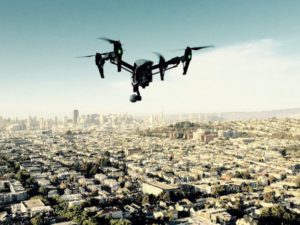
image: Cambodia, PI (CC 2.0)
At Amsterdam Drone Week today, Commercial UAV Expo sponsored a panel of experts from all over Europe to discuss security and counterdrone strategies. From INTERPOL to drone incident reporting systems DroneALERT, experts talked about the importance of security in drone integration. The City of Amsterdam gave us an inside look at how they approach the problem of unauthorized drone activity.
Brooke Tapsall of DroneAlert points out that cUAS is not just shooting drones down, or what happens during a drone incursion. Rather, it’s an interoperable system of regulation, technology, and multiple stakeholders.
DroneAlert records countless drone incursions: from criminal intent drone use to uneducated operators using drones in the wrong places. The locations where you need cUAS protection, however, can be placed in broad categories: urban environments, critical infrastructure assets, events, emergency locations, and cross-border areas.
Robotics expert Gokul Srinivasan says that CUAS technology solutions can also be categorized: kinetic solutions for mitigating drone threats include high energy laser, high energy electromagnetic pulse, air defense systems, drone vs. drone, and simple handguns. Non-kinetic solutions to drone incursions involve spoofing or jamming.
Beyond the specific technology, however, are a myriad of stakeholders and communication systems that need to be involved: and these systems must be interoperable in order to be successful. The City of Amsterdam explained how they are handling security and counterdrone problems.
The City of Amsterdam: Developing a Framework of Roles for Cities and Police Around Commercial Drone Use
The City of Amsterdam has a population of about 1 million, and hosts nearly 20 million visitors each year. From the public safety perspective, says Joshua Serrao of the City of Amsterdam, city police themselves use drones for crime scene investigation, forensic investigation, and crowd monitoring. However, “criminals do innovate,” he says. “We’re seeing a lot of contraband deliveries.”
The City of Amsterdam has adopted a framework of the roles that cities and police must adopt with respect to drones:
- Regulator: establishing local regulations like no-fly zones at certain times or places;
- User: pursuing drones as a tool for city development and policing;
- Facilitator: helping the drone industry thrive;
- Protector: protecting citizens from the negative effects of drones – which means considering the roles of drones in urban planning, as well as implementing counter UAS strategies.
Most of Amsterdam is located within the control area of Shiphol Airport – and most recreational operators don’t know that, Serrao points out. The city launched drone detection (customized Aeroscope technology) in the City of Amsterdam, first as a way to meet UEFA requirements for hosting the EURO 2021 football cup.
The UEFA requirements called for air security: at the time, “We had no insights on how many recreational drones were flying,” Serrao says. Drone detection indicated more than 23,000 unique flights within the city center, however, and many of them were flying over 500 meter sin altitude. “Now, due to our drone detection capability we can locate the drones and the operators.”
While resource restraints make it impractical to track down every rogue drone, the municipality and the police partner on following up those threats that are immediately significant- and they are also working on partnering on education, so that recreational flyers understand where it is legal to fly.
Amsterdam’s strategy for security and counterdrone makes clear the necessary partnership between technology providers, law enforcement, and city management: all of whom have a critical part to play in ensuring that legitimate commercial and public safety drones can do their jobs, while drone threats are mitigated effectively.
Read more about security and counter drone technology:
Miriam McNabb is the Editor-in-Chief of DRONELIFE and CEO of JobForDrones, a professional drone services marketplace, and a fascinated observer of the emerging drone industry and the regulatory environment for drones. Miriam has penned over 3,000 articles focused on the commercial drone space and is an international speaker and recognized figure in the industry. Miriam has a degree from the University of Chicago and over 20 years of experience in high tech sales and marketing for new technologies.
For drone industry consulting or writing, Email Miriam.
TWITTER:@spaldingbarker
Subscribe to DroneLife here.
https://dronelife.com/2022/03/30/security-and-counterdrone-from-the-floor-of-adw-the-city-of-amsterdams-strategy-for-dealing-with-unauthorized-drone-activity/
 Unmanned Aerial Vehicle The latest drone news
Unmanned Aerial Vehicle The latest drone news



